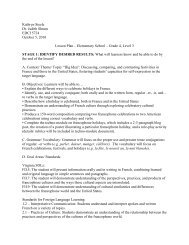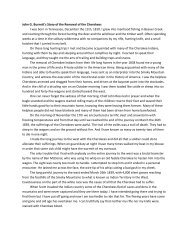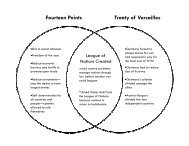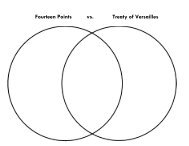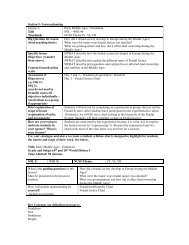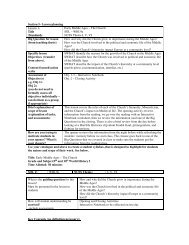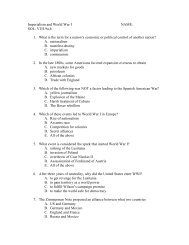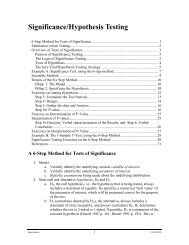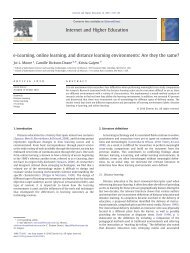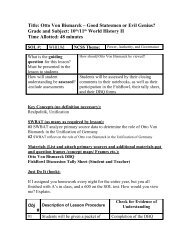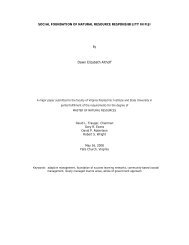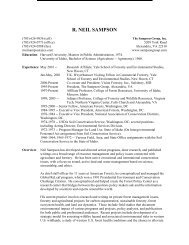Nested Designs - Scholar
Nested Designs - Scholar
Nested Designs - Scholar
You also want an ePaper? Increase the reach of your titles
YUMPU automatically turns print PDFs into web optimized ePapers that Google loves.
The first way is to use the sums of squares and degrees of freedom computed by SAS to calculate<br />
"by hand" the mean squares and the proper Fs.<br />
The second way is use a TEST statement with PROC ANOVA or with PROC GLM. The TEST<br />
statement syntax is<br />
TEST H=numerator mean square E=denominator mean square;<br />
where "numerator mean square" represents the factor in the model statement whose mean square<br />
goes in the numerator, and where "denominator mean square" represents the factor in the model<br />
statement whose mean square goes in the denominator. Another way to think of it is that "H"<br />
stands for "Hypothesis" and "E" stands for "Error". "H=" signifies the factor about which we<br />
wish to test a hypothesis, and "E=" signifies the factor we wish to use as an error term for the<br />
test.<br />
To test the first two hypotheses mentioned earlier we would use the following TEST statements.<br />
TEST H=HYBRID E=POTS(HYBRID);<br />
TEST H=POTS(HYBRID) E=PLANT(POTS HYBRID);<br />
6. Conclusion<br />
As always, the conclusion is a statement about the alternative hypothesis.<br />
For fixed effects, the hypotheses are about unknown constant parameters, and the conclusion, as<br />
mentioned above, would take the form<br />
or<br />
There is/is not significant statistical evidence that hybrid affects<br />
transpiration rate (P=__ ),<br />
There is/is not significant statistical evidence that mean transpiration rate<br />
differes among hybrids (P=__ ).<br />
nested01.docx 18 4/5/2012



